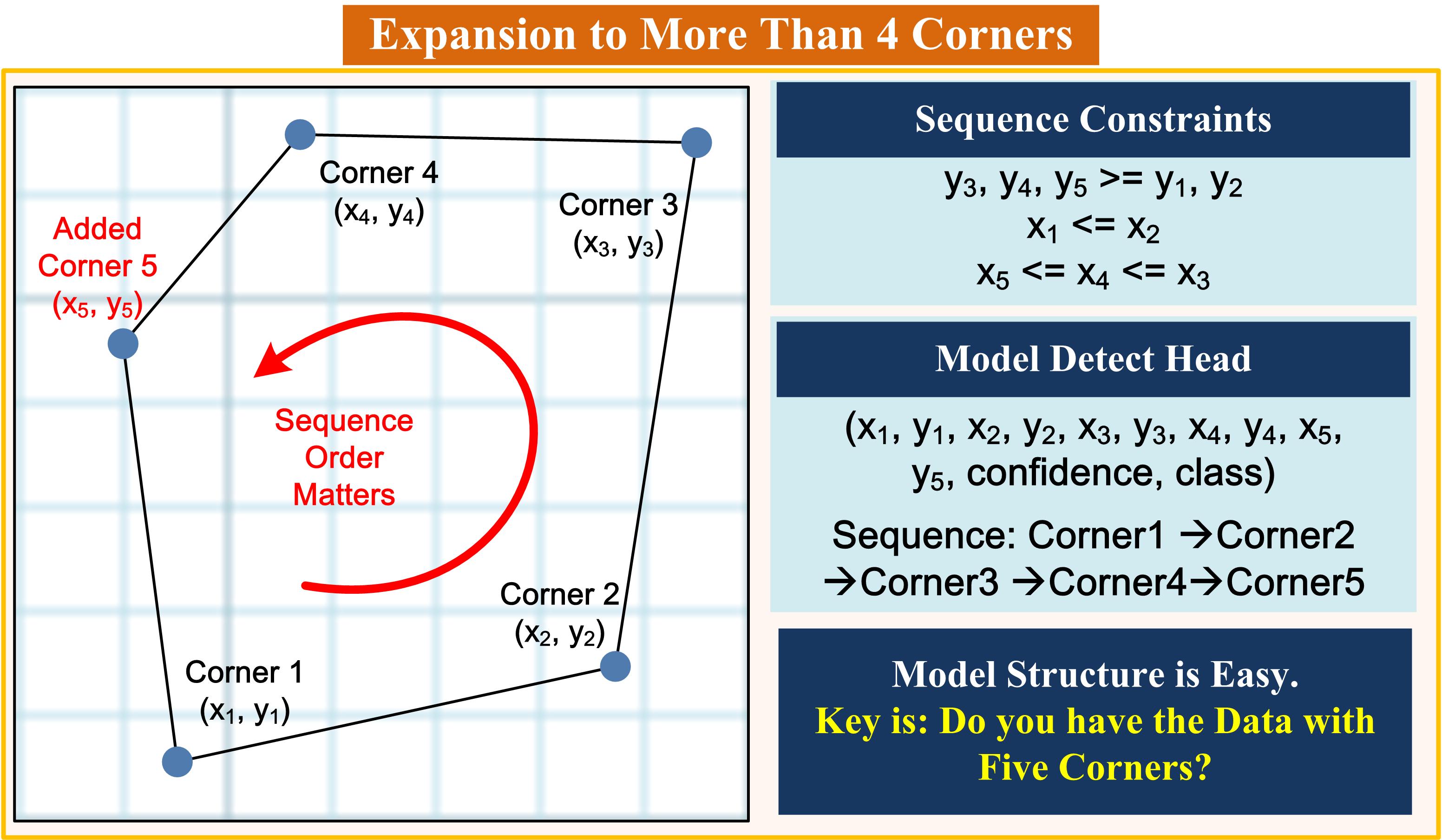Polygon-Yolov5
This repository is based on Ultralytics/yolov5, with adjustments to enable polygon prediction boxes.
Section I. Description
The codes are based on Ultralytics/yolov5, and several functions are added and modified to enable polygon prediction boxes.
The modifications compared with Ultralytics/yolov5 and their brief descriptions are summarized below:
- data/polygon_ucas.yaml : Exemplar UCAS-AOD dataset to test the effects of polygon boxes
- data/images/UCAS-AOD : For the inference of polygon-yolov5s-ucas.pt
- models/common.py :
3.1. class Polygon_NMS : Non-Maximum Suppression (NMS) module for Polygon Boxes
3.2. class Polygon_AutoShape : Polygon Version of Original AutoShape, input-robust polygon model wrapper for passing cv2/np/PIL/torch inputs. Includes preprocessing, inference and Polygon_NMS
3.3. class Polygon_Detections : Polygon detections class for Polygon-YOLOv5 inference results - models/polygon_yolov5s_ucas.yaml : Configuration file of polygon yolov5s for exemplar UCAS-AOD dataset
- models/yolo.py :
5.1. class Polygon_Detect : Detect head for polygon yolov5 models with polygon box prediction
5.2. class Polygon_Model : Polygon yolov5 models with polygon box prediction - utils/iou_cuda : CUDA extension for iou computation of polygon boxes
6.1. extensions.cpp : CUDA extension file
6.2. inter_union_cuda.cu : CUDA code for computing iou of polygon boxes
6.3. setup.py : for building CUDA extensions module polygon_inter_union_cuda, with two functions polygon_inter_union_cuda and polygon_b_inter_union_cuda - utils/autoanchor.py :
7.1. def polygon_check_anchors : Polygon version of original check_anchors
7.2. def polygon_kmean_anchors : Create kmeans-evolved anchors from polygon-enabled training dataset, use minimum outter bounding box as approximations - utils/datasets.py :
8.1. def polygon_random_perspective : Data augmentation for datasets with polygon boxes (augmentation effects: HSV-Hue, HSV-Saturation, HSV-Value, rotation, translation, scale, shear, perspective, flip up-down, flip left-right, mosaic, mixup)
8.2. def polygon_box_candidates : Polygon version of original box_candidates
8.3. class Polygon_LoadImagesAndLabels : Polygon version of original LoadImagesAndLabels
8.4. def polygon_load_mosaic : Loads images in a 4-mosaic, with polygon boxes
8.5. def polygon_load_mosaic9 : Loads images in a 9-mosaic, with polygon boxes
8.6. def polygon_verify_image_label : Verify one image-label pair for polygon datasets
8.7. def create_dataloader : Has been modified to include polygon datasets - utils/general.py :
9.1. def xyxyxyxyn2xyxyxyxy : Convert normalized xyxyxyxy or segments into pixel xyxyxyxy or segments
9.2. def polygon_segment2box : Convert 1 segment label to 1 polygon box label
9.3. def polygon_segments2boxes : Convert segment labels to polygon box labels
9.4. def polygon_scale_coords : Rescale polygon coords (xyxyxyxy) from img1_shape to img0_shape
9.5. def polygon_clip_coords : Clip bounding polygon xyxyxyxy bounding boxes to image shape (height, width)
9.6. def polygon_inter_union_cpu : iou computation (polygon) with cpu
9.7. def polygon_box_iou : Compute iou of polygon boxes via cpu or cuda
9.8. def polygon_b_inter_union_cpu : iou computation (polygon) with cpu for class Polygon_ComputeLoss in loss.py
9.9. def polygon_bbox_iou : Compute iou of polygon boxes for class Polygon_ComputeLoss in loss.py via cpu or cuda
9.10. def polygon_non_max_suppression : Runs Non-Maximum Suppression (NMS) on inference results for polygon boxes
9.11. def polygon_nms_kernel : Non maximum suppression kernel for polygon-enabled boxes
9.12. def order_corners : Return sorted corners for loss.py::class Polygon_ComputeLoss::build_targets - utils/loss.py :
10.1. class Polygon_ComputeLoss : Compute loss for polygon boxes - utils/metrics.py :
11.1. class Polygon_ConfusionMatrix : Polygon version of original ConfusionMatrix - utils/plots.py :
12.1. def polygon_plot_one_box : Plot one polygon box on image
12.2. def polygon_plot_one_box_PIL : Plot one polygon box on image via PIL
12.3. def polygon_output_to_target : Convert model output to target format (batch_id, class_id, x1, y1, x2, y2, x3, y3, x4, y4, conf)
12.4. def polygon_plot_images : Polygon version of original plot_images
12.5. def polygon_plot_test_txt : Polygon version of original plot_test_txt
12.6. def polygon_plot_targets_txt : Polygon version of original plot_targets_txt
12.7. def polygon_plot_labels : Polygon version of original plot_labels - polygon_train.py : For training polygon-yolov5 models
- polygon_test.py : For testing polygon-yolov5 models
- polygon_detect.py : For detecting polygon-yolov5 models
- requirements.py : Added python model shapely
Section II. How Does Polygon Boxes Work? How Does Polygon Boxes Different from Axis-Aligned Boxes?
- build_targets in class Polygon_ComputeLoss & forward in class Polygon_Detect
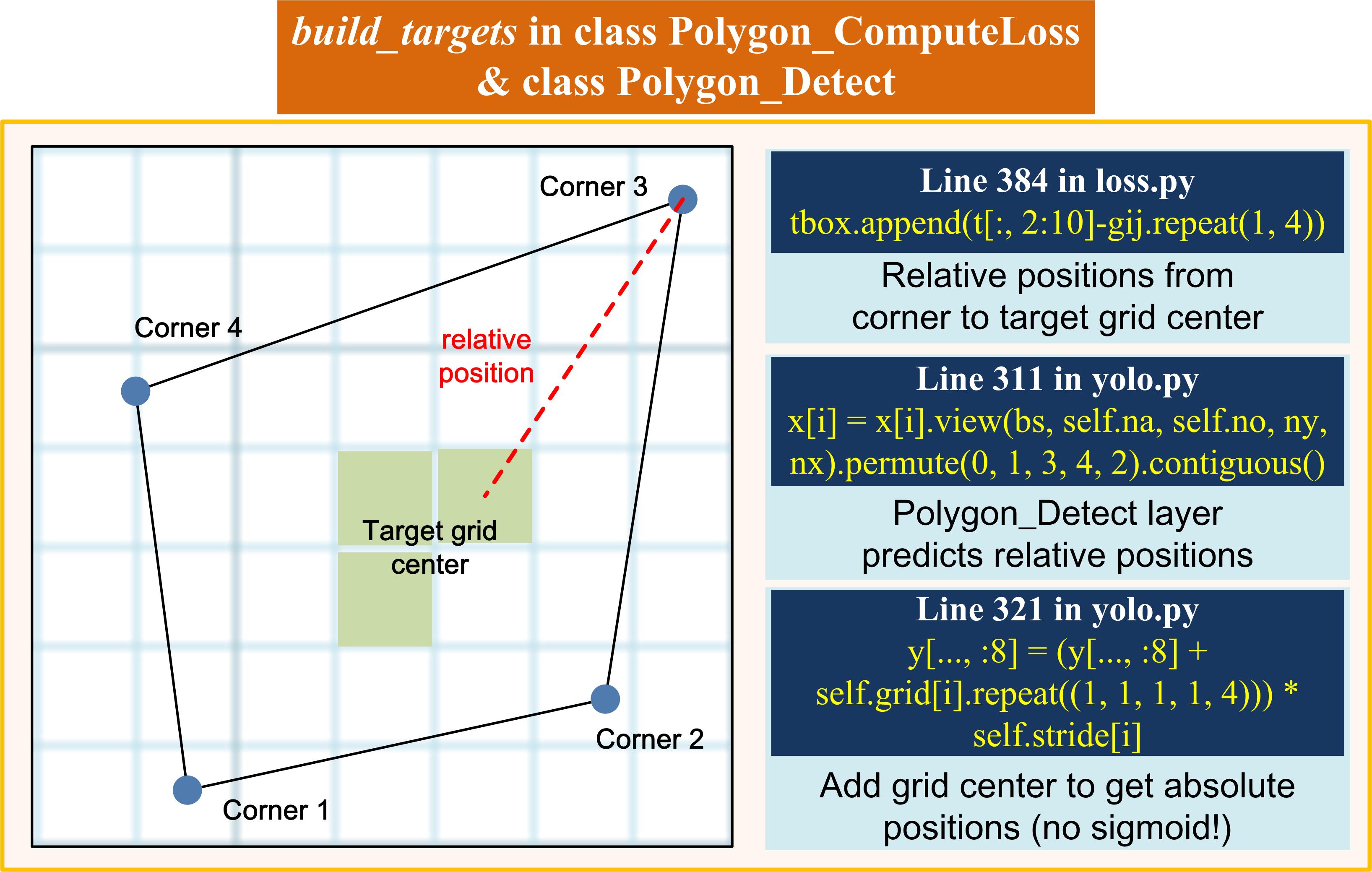
2. order_corners in general.py
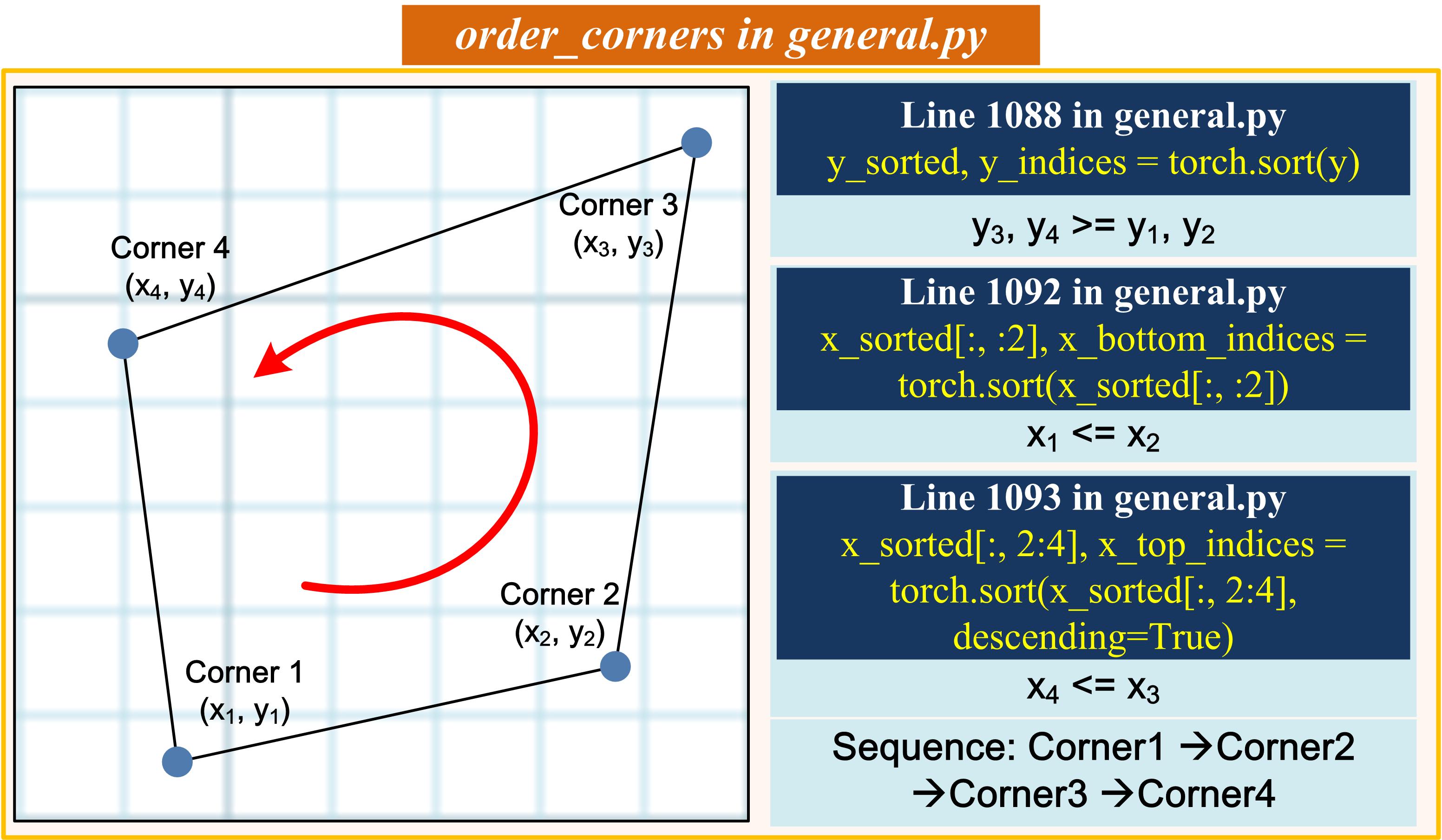
3. Illustrations of box loss of polygon boxes

Section III. Installation
For the CUDA extension to be successfully built without error, please use CUDA version >= 11.2. The codes have been verified in Ubuntu 16.04 with Tesla K80 GPU.
# The following codes install CUDA 11.2 from scratch on Ubuntu 16.04, if you have installed it, please ignore
# If you are using other versions of systems, please check https://tutorialforlinux.com/2019/12/01/how-to-add-cuda-repository-for-ubuntu-based-oses-2/
# Install Ubuntu kernel head
sudo apt install linux-headers-$(uname -r)
# Pinning CUDA repo
wget https://developer.download.nvidia.com/compute/cuda/repos/ubuntu1604/x86_64/cuda-ubuntu1604.pin
sudo mv cuda-ubuntu1604.pin /etc/apt/preferences.d/cuda-repository-pin-600
# Add CUDA GPG key
sudo apt-key adv --fetch-keys http://developer.download.nvidia.com/compute/cuda/repos/ubuntu1604/x86_64/7fa2af80.pub
# Setting up CUDA repo
sudo add-apt-repository "deb https://developer.download.nvidia.com/compute/cuda/repos/ubuntu1604/x86_64/ /"
# Refresh apt repositories
sudo apt update
# Installing CUDA 11.2
sudo apt install cuda-11-2 -y
sudo apt install cuda-toolkit-11-2 -y
# Setting up path
echo 'export PATH=/usr/local/cuda-11.2/bin${PATH:+:${PATH}}' >> $HOME/.bashrc
# You are done installing CUDA 11.2
# Check NVIDIA
nvidia-smi
# Update all apts
sudo apt-get update
sudo apt-get -y upgrade
# Begin installing python 3.7
curl -o ~/miniconda.sh -O https://repo.anaconda.com/miniconda/Miniconda3-latest-Linux-x86_64.sh
chmod +x ~/miniconda.sh
./miniconda.sh -b
echo "PATH=~/miniconda3/bin:$PATH" >> ~/.bashrc
source ~/.bashrc
conda install -y python=3.7
# You are done installing python
The following codes set you up with the Polygon Yolov5.
# clone git repo
git clone https://github.com/XinzeLee/PolygonObjectDetection
cd PolygonObjectDetection/polygon-yolov5
# install python package requirements
pip install -r requirements.txt
# install CUDA extensions
cd utils/iou_cuda
python setup.py install
# cd back to polygon-yolov5 folder
cd .. && cd ..
Section IV. Polygon-Tutorial 1: Deploy the Polygon Yolov5s
Try Polygon Yolov5s Model by Following Polygon-Tutorial 1
-
Inference
$ python polygon_detect.py --weights polygon-yolov5s-ucas.pt --img 1024 --conf 0.75 \ --source data/images/UCAS-AOD --iou-thres 0.4 --hide-labels
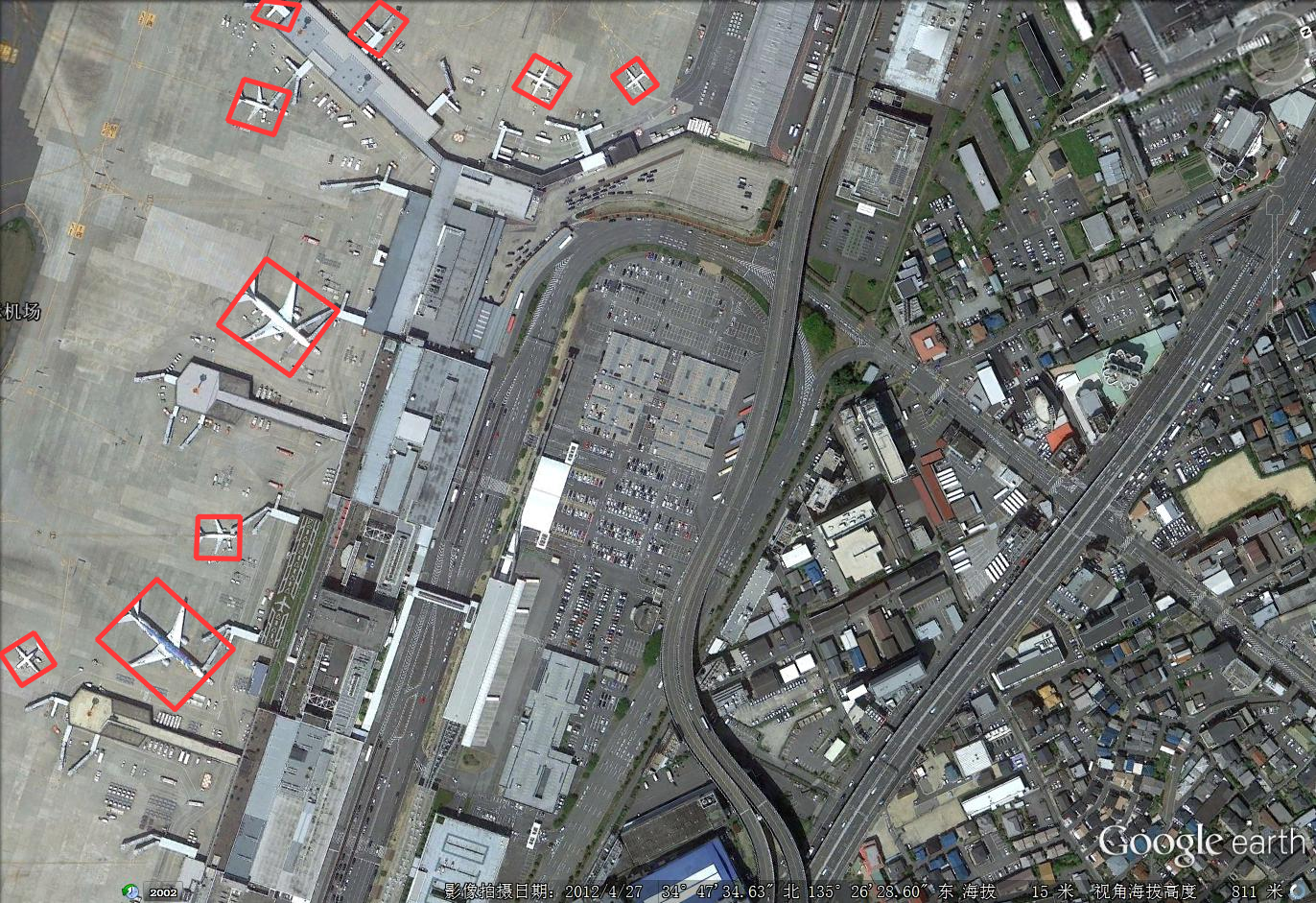
-
Test
$ python polygon_test.py --weights polygon-yolov5s-ucas.pt --data polygon_ucas.yaml \ --img 1024 --iou 0.65 --task val

-
Train
$ python polygon_train.py --weights polygon-yolov5s-ucas.pt --cfg polygon_yolov5s_ucas.yaml \ --data polygon_ucas.yaml --hyp hyp.ucas.yaml --img-size 1024 \ --epochs 3 --batch-size 12 --noautoanchor --polygon --cache -
Performance4.1. Confusion Matrix
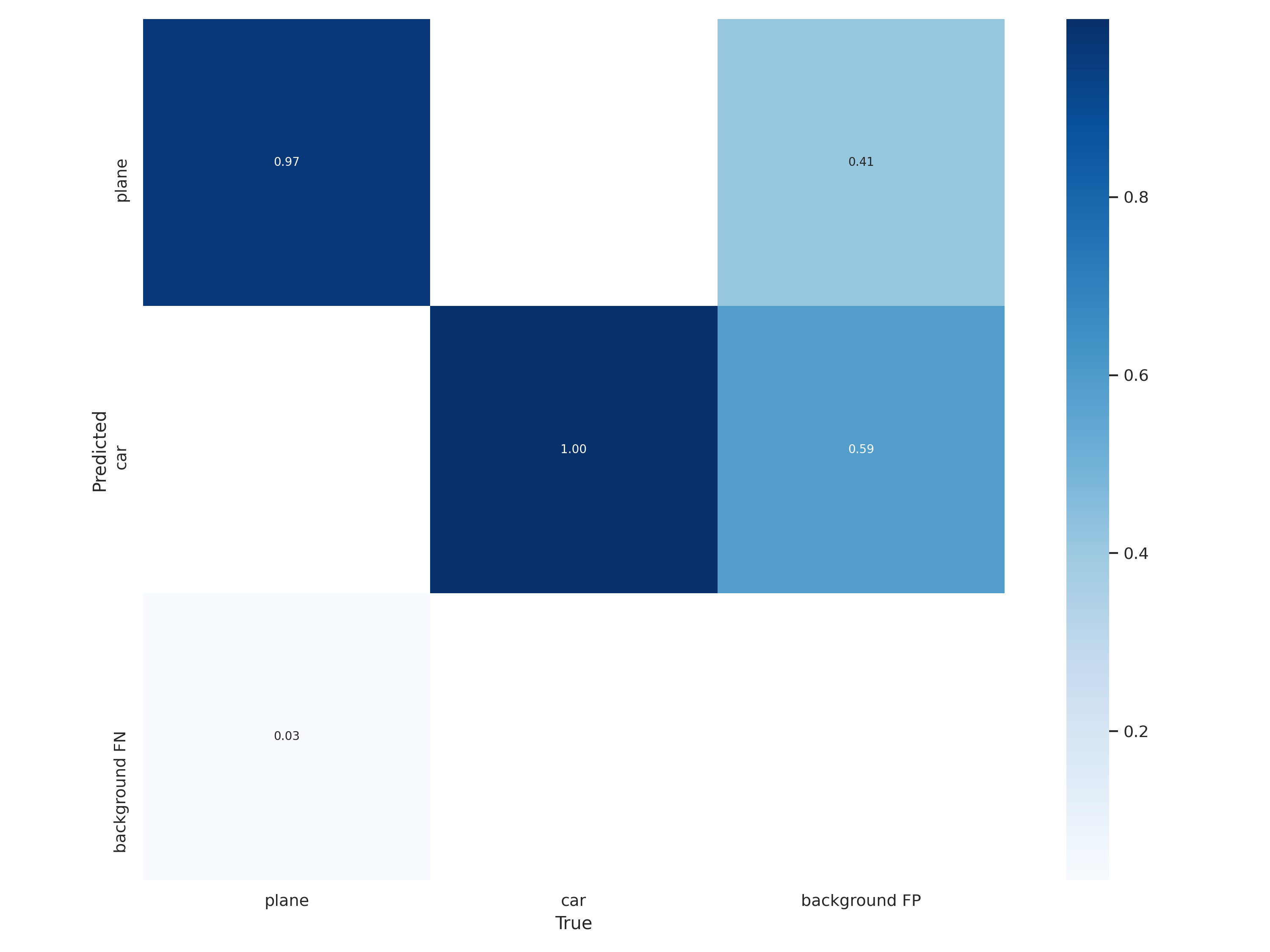
4.2. Precision Curve
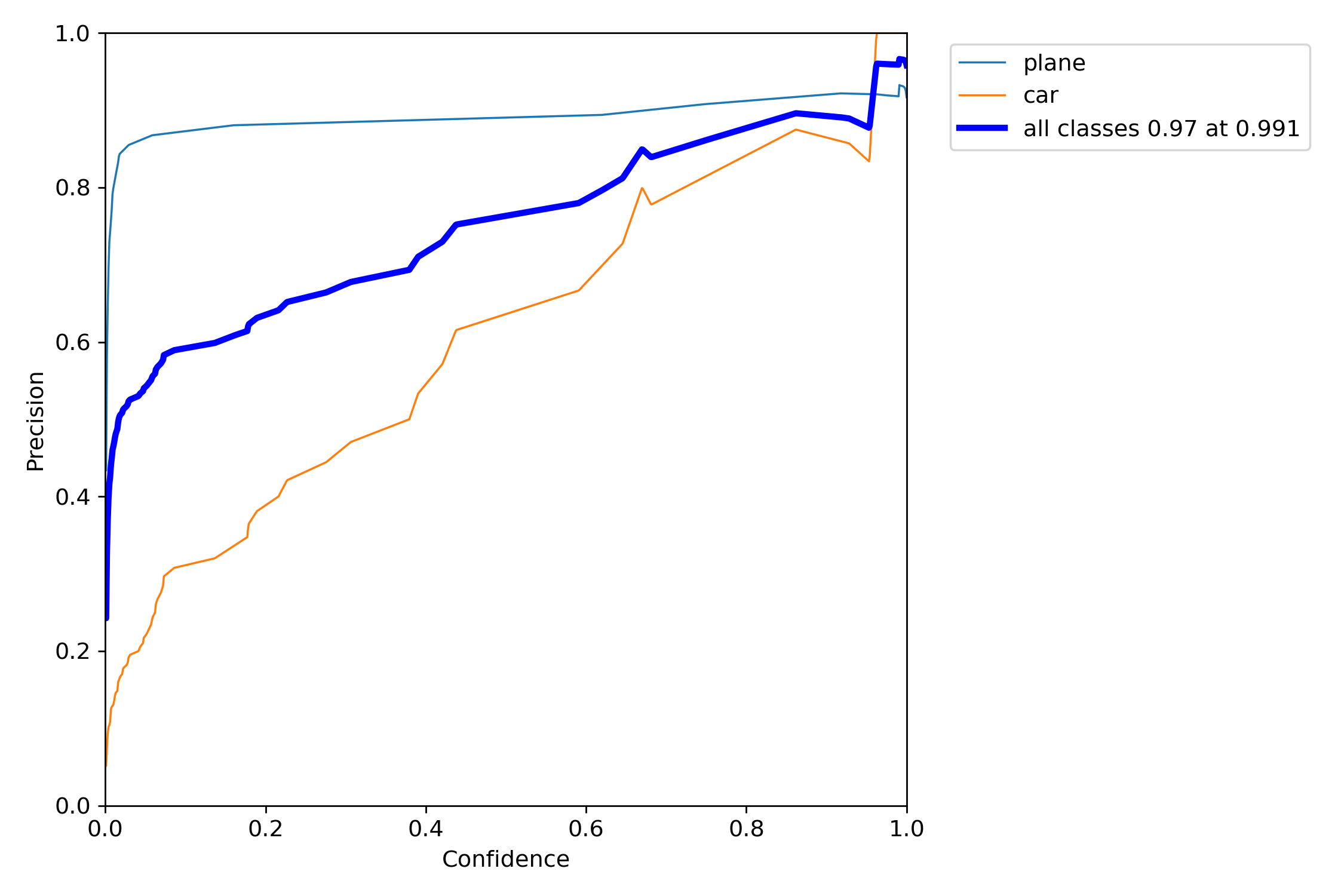
4.3. Recall Curve
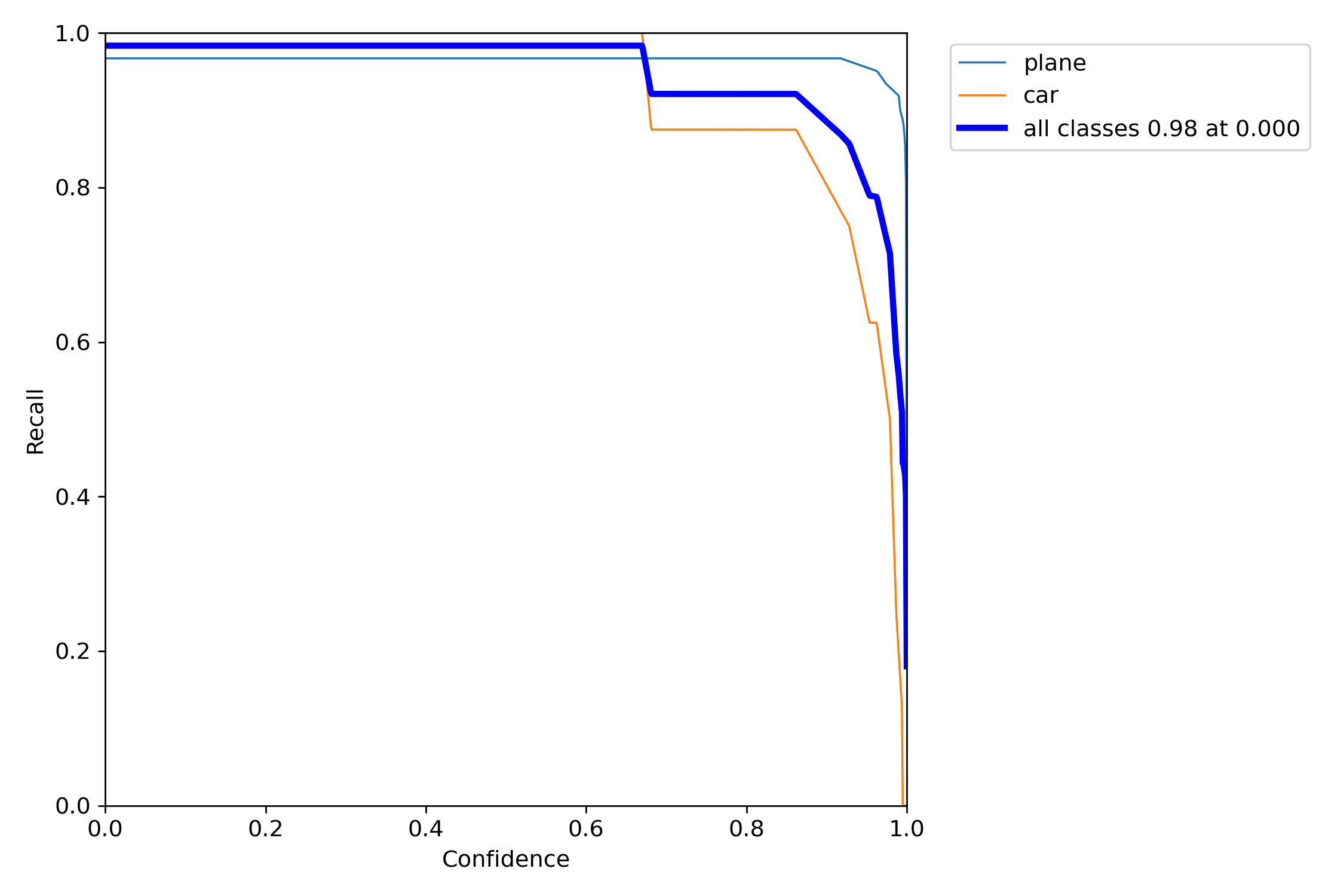
4.4. Precision-Recall Curve
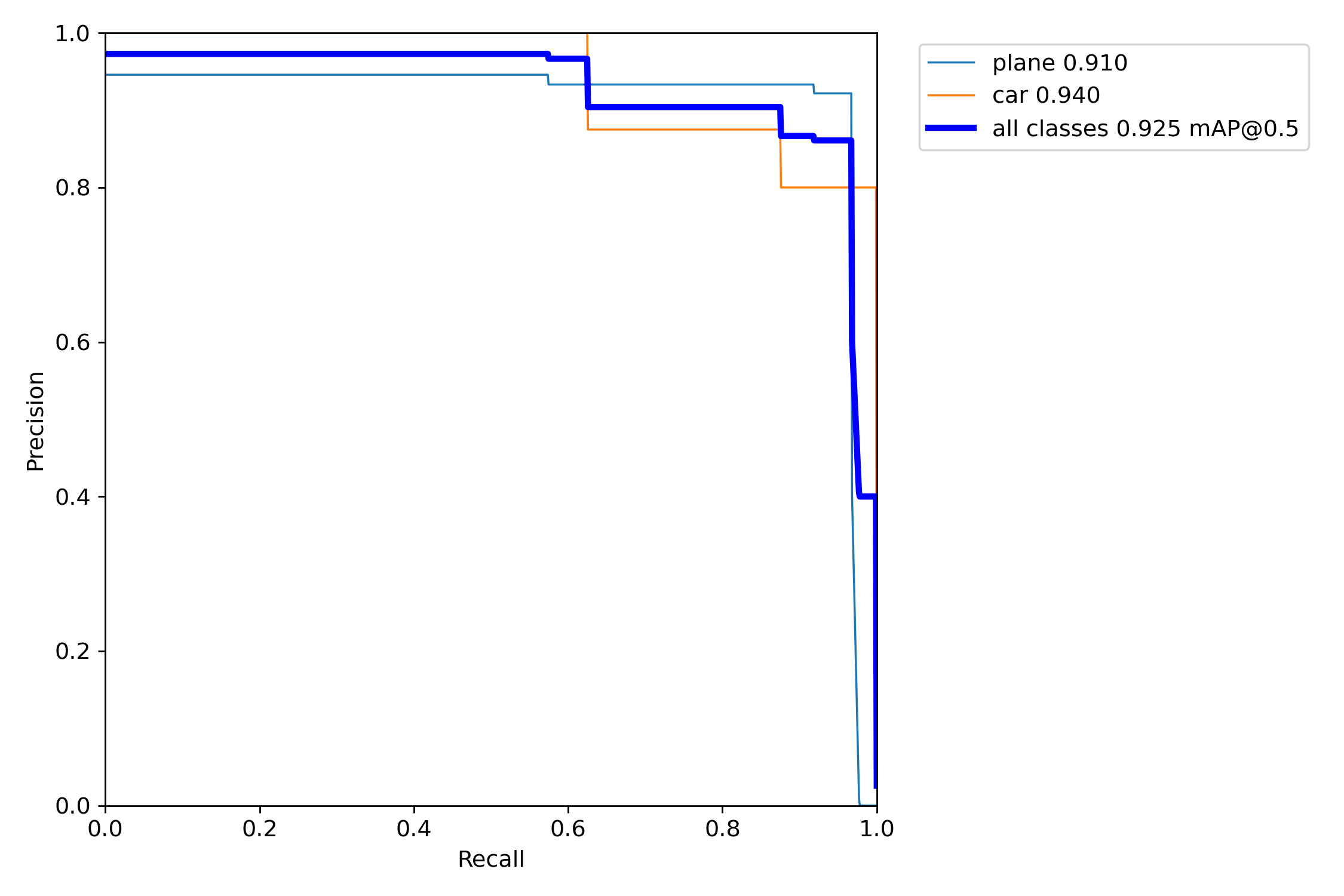
4.5. F1 Curve
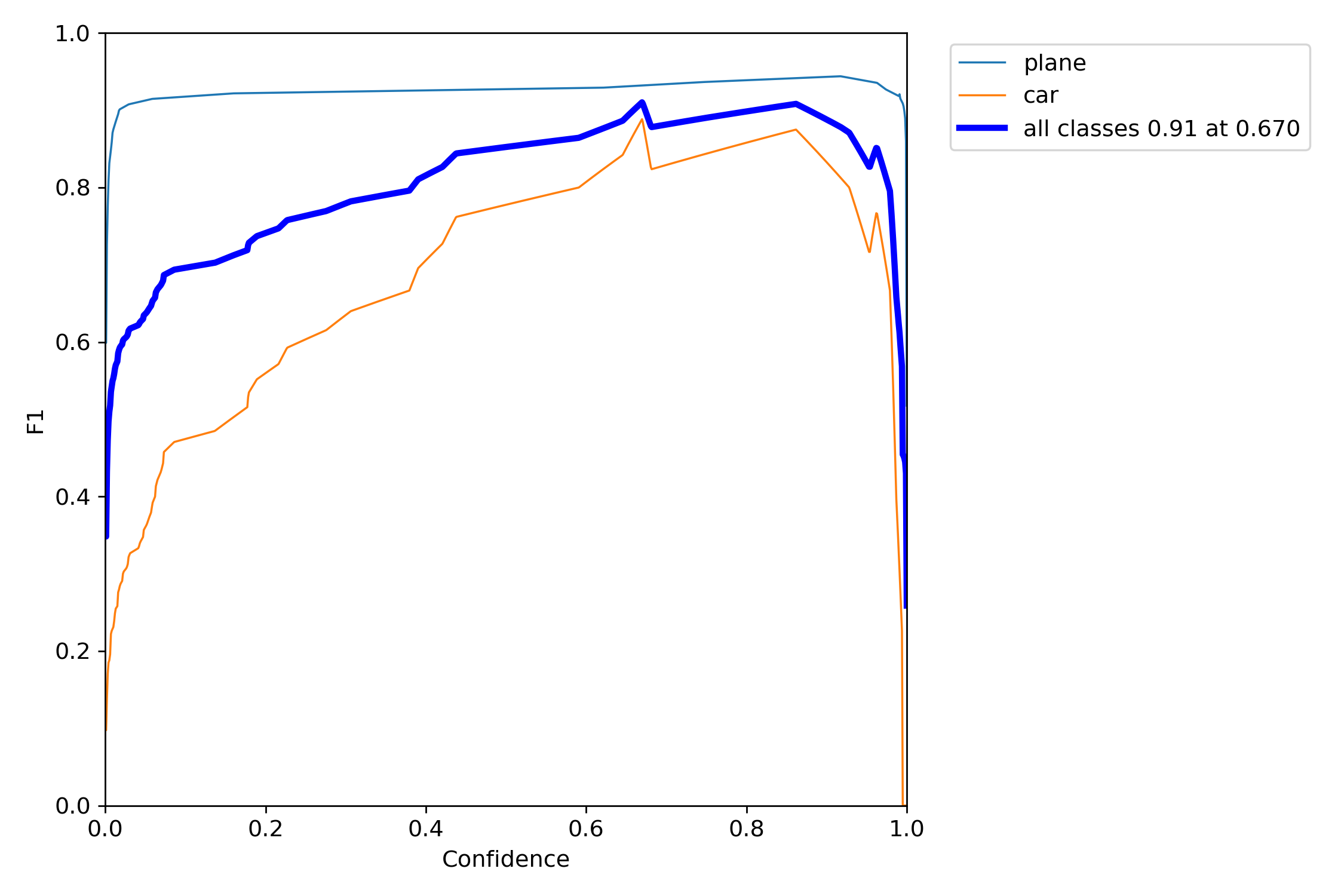
Section V. Polygon-Tutorial 2: Transform COCO Dataset to Polygon Labels Using Segmentation
Transform COCO Dataset to Polygon Labels by Following [Polygon-Tutorial 2](https://github.com/XinzeLee/PolygonObjectDetection/blob/main/polygon-yolov5/Polygon-Tutorial2.ipynb]
Transformed Exemplar Figure
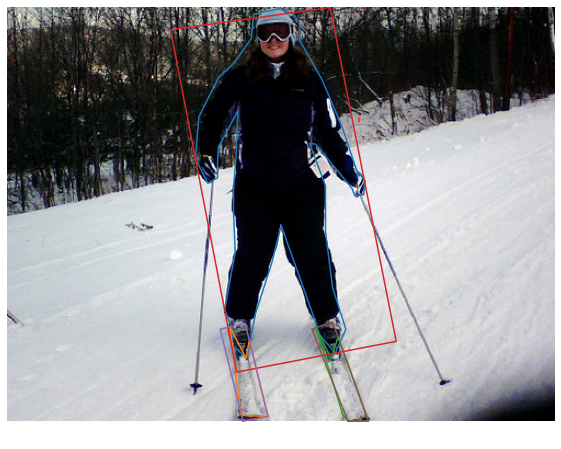
Section VI. Expansion to More Than Four Corners
